(Centre): John Nicholls hits the deck in 1973; (inset): Wayne Harmes, Nick Malceski, the 2010 draw, Essendon breaks through.
You’re a bastard, COVID. For all the obvious reasons, of course, but from an admittedly selfish point of view, for costing me a milestone I’ve been eyeing off for years.
I attended my first grand final in 1973, aged eight. I’ve been to every single one (including two replays) since, the first 13 purely as a fanatical footy fan, the last 36 as both a professional observer and still a fanatical footy fan.
This season was to be No. 50. Not that I was expecting a run-through or anything when I arrived at the MCG on the big day.
But I really was looking forward to arriving around midday, as has been my custom, strolling around the sporting mecca and once again just soaking up the atmosphere, the colour, the obvious tension on the faces of supporters of the competing clubs, all the vibes that go with a day that identifies my home town more than any other, this time armed with a half-century of fond memories.
Sitting in front of my television set instead, five hours later than usual, to watch a game played 1800 kilometres away, certainly wasn’t on the agenda. Call me childish, but I’ll be surprised if I’m not a little teary, the recently-coined phrase FOMO (fear of missing out) gripping even a world-weary middle-aged man.
And those memories will come flooding back, perhaps more vividly than ever before. That very first grand final I saw, between bitter rivals Richmond and Carlton, sitting with my now-departed father and brother just a few rows back from the fence behind the Punt Road end goals.
I can still clearly picture two vivid images from the day. I don’t need a replay to recall exactly the sight, and sound, of Richmond’s Lawrie Fowler collecting Carlton captain-coach John Nicholls with a huge shirtfront very early in the game, nor the moment in the second term when Neil Balme flattened Geoff Southby not 30 metres away from us.
There was 1977, when we occupied a very similar position at the Punt Road end. I’ll never forget at three-quarter time, Collingwood leading by 27 points and a hapless North Melbourne having kicked just four goals for the game, a group of Magpie fans behind us actually opening a bottle of champagne, toasting the impending breaking of their then 19-year premiership drought.
I was only 12, but I knew what tempting fate meant, and I remember thinking they were doing so. And so ensued one of the most dramatic final quarters in grand final history, Ross “Twiggy” Dunne’s last-minute goal saving the Pies and earning the second grand final draw in history.
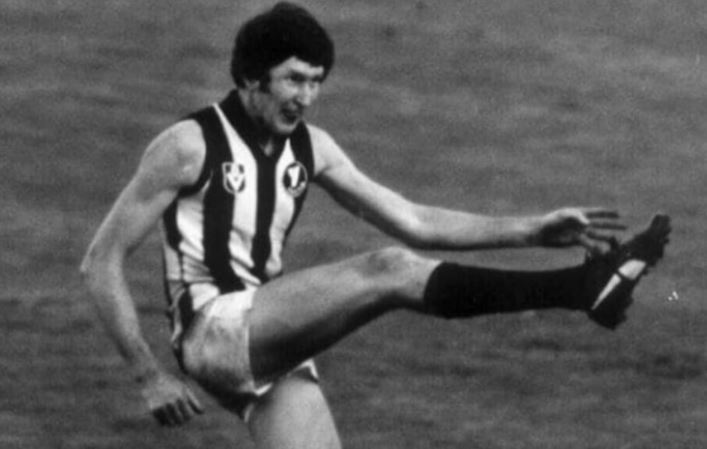
Ross “Twiggy” Dunne levels the scores in the dying seconds of the drawn 1977 grand final.
I’d been lucky enough to be an eye-witness to football history. But it was hard to comprehend, as it seemed for most of the 108,000-plus present, who, like us, stayed fixed to the spot in contemplative silence for a good 10 minutes after the siren went.
What were the odds even when North won the replay the following week that Collingwood’s premiership drought would end up extending to 32 years and take in no fewer than eight grand final defeats?
Come to think of it, what were the odds I’d also be in attendance 33 years later to witness the third ever and (as it transpired after extra time was introduced) last grand final draw?
Drama seemed to be a feature of many of those early grand finals I went to with family. In 1979, it was with my older brother-in-law to see the most storied enemies of all, Carlton and Collingwood.
Yes, I am going to mention the Wayne Harmes incident. But not before another I witnessed a couple of hours earlier on the way to the game.
My sister and her husband lived in Richmond, a stone’s throw from the ground. We had seats, and the weather had been ordinary, so we decided a relatively late arrival was in order.
About half-an-hour before game time, we sauntered along Brunton Avenue towards where we’d be watching the game, in the top deck of the Ponsford Stand. We weren’t too worried about missing most of what then passed for pre-game entertainment. But we knew before we even entered the ground that it hadn’t exactly gone according to plan.
That’s because, as we walked that space between the ground and the Jolimont railyards, we stopped, stunned, when a parachutist who’d miscalculated his drop into the centre square came literally flying over the top of us and into those railyards, his chute very fortunately acting as a kind of brake, tangled up in the lines as he dangled helplessly beneath.
Incredibly, the parachutist wasn’t seriously injured, a fact I actually only confirmed recently when a friend on social media managed to dig up a newspaper report of the incident. That’s also ironic. Because the story out of that day you’d imagine would have commanded pages and pages of the newspapers actually didn’t rate a mention.
From our seats that afternoon just two rows back in the top deck of the Ponsford Stand, we had as perfect a view as anyone in the ground of the moment still talked about regularly more than 40 years on.
That, of course, is Wayne Harmes’ desperate dash, dive and thump to keep the ball alive in the city end forward pocket. His effort knocked the ball into the path of Ken Sheldon, who effectively sealed victory for the Blues, much to the on-going consternation of Collingwood fans.
For what it’s worth, having had that view, I’ve always thought the ball was definitely in. How big a fuss was it at the time? Hard to believe, I know, but barely a blip. This is definitely a “controversy” which has only grown legs over the years.
If you don’t believe me, check the following Monday’s reports in “The Age” (remembering in those days only the Sunday Press and Observer serviced Sunday reading habits). While you’ll find descriptions of Harmes’ amazing chase, there was literally not a word spent questioning whether the ball was actually in or out.
PLEASE HELP US CONTINUE TO THRIVE BY BECOMING AN OFFICIAL FOOTYOLOGY PATRON. JUST CLICK THIS LINK.
I watched a few grand finals subsequently from standing room. Amazingly, from there, I also happened to be in pole position for the most-talked about moment of the 1982 grand final, Helen d’Amico’s third-quarter “streak” across the ground straight towards me and my two 17-year-old mates in the Northern Stand.
This was also a drama-filled grand final, in which the underdog Blues upset the favourites Richmond to win back-to-back flags. Not that my mates seemed to care. On the train home, while I wanted to talk about Maurice Rioli becoming the first Norm Smith medallist from a losing side, my friends were far too pre-occupied talking about Helen, and asking why, to be a little vulgar, “the carpet hadn’t matched the drapes”.

Helen d’Amico is led away after her famous 1982 grand final streak.
My sign-off from the days of watching the grand final from the outer came, appropriately, in 1984, the day my team Essendon finally broke its own 19-year premiership drought with a then record 9.6 in the last term, a quarter of football I have watched so often I can literally (perhaps sadly) actually recite every single passage of play.
Doubt me? Bail me up one day and ask me the Dons’ final term goalkickers. My response will be Pavlovian … “Baker, Bradbury, Thompson, Baker, Merrett, Weston, Watson, Watson, Neagle.”
Our seats that day were perfect again: Southern Stand wing, bottom deck, directly behind the Essendon cheer squad. At three-quarter time, the team I had gone to watch week in, week out by then for nearly 15 years trailed by 23 points and was as far away from a flag as ever.
I remember turning to those same mates during the last break and in resigned despair pronouncing that none of us would see an Essendon premiership in our lifetime. Thirty-odd minutes later after that magnificent hail of goals, we wept tears of delight instead.
I have some unlikely mementos of 29 September 1984. Such as the “Footy Record” in which, like every week (and still now) I had meticulously and neatly scored the game, marking each individual goal and point.
I prided myself on my neatness of stroke. But there’s one major exception. It’s the one I recorded when Merv Neagle kicked the final and clearly decisive goal of that game to give Essendon a 24-point lead. That one is a barely decipherable scrawl.
I also, when I got home, discovered a piece of red crepe paper lodged within those middle pages. And yes, it’s still there. Why not? It’s a historical artefact.
Every grand final since that memorable day (except 2017, when I did the boundary for 1116 SEN) has been spent in the press box. The original version at the MCG. A couple of temporary numbers in 2004-05 as the new stands were being built. The new, comparatively lush media centre of today.

“Borrowing” Adam Cooney’s Brownlow Medal in the press box on grand final day 2008.
And of course, the one out at Waverley in 1991, from where us media types not only witnessed the infamous pre-game performance of Angry Anderson in the “Batmobile”, but when the then-Brisbane Bears won the reserves grand final beforehand, rose as one (perhaps a little sarcastically) to belt out the “Dare To Beat The Bear” theme song.
Look, we’re professionals. But it doesn’t mean we don’t get caught up in the emotion of the biggest day of the football year. Yep, still.
It happened to me in 1997 when St Kilda’s fairytale second flag attempt was about to be thwarted by a rampaging Darren Jarman and, after Adelaide was awarded a dubious free kick, I dropped the magic word with a force which managed to escape out the open press box window and at least a dozen rows beyond, causing my near ejection.
I dropped it too loudly again in 2006, when, voting for a second time on the Norm Smith Medal, West Coast leading Sydney by just one point, and deep in time-on, I was hassled for my voting slip. I won that battle, refusing to hand it over until the siren had rung. Andrew Embley, you owe me.
I dropped it several times over in those frantic final few moments of the 2010 draw between Collingwood and St Kilda, arguably the only person in the whole media contingent actively barracking for the draw just so we could come back and do it again.
And I dropped it yet again, more in wonder than anger, in that match-winning moment of still the best grand final I have witnessed in the flesh, 2012, when Sydney’s Nick Malceski’s speculative snap sailed up and up and barely over the goal line to give the Swans an unassailable 10-point lead against Hawthorn.
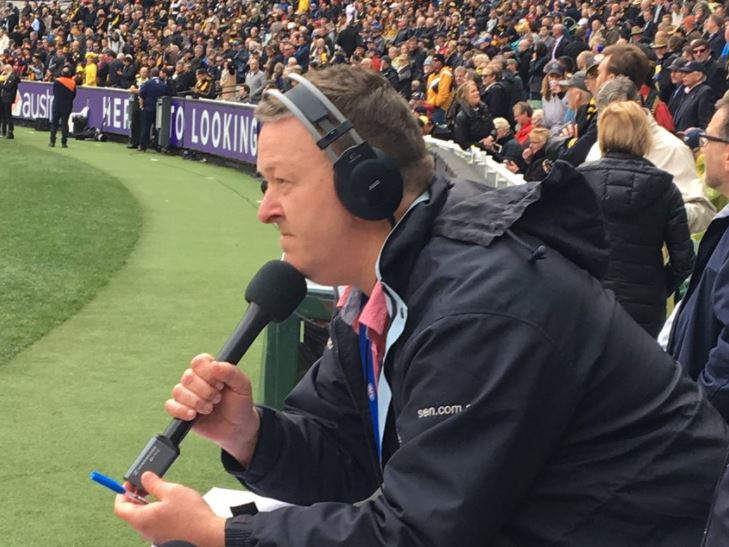
Doing the boundary riding for 1116 SEN at the 2017 grand final.
Perhaps, though, I’m finally after all these years discovering some decorum. When Dom Sheed dobbed his memorable matchwinner for West Coast against Collingwood two years ago with just one minute 40 seconds left on the clock, I was relatively restrained.
Not through any sense of professional obligation, mind you. More because I was already conducting an impromptu reshuffling of my catalogue of greatest grand final moments. And yes, Dom, you made the cut.
Like everyone else, I’m hoping Saturday’s Richmond-Geelong grand final is a ripper regardless of my first absence from proceedings since 1972. But I’d be lying if I said for me an anti-climax wouldn’t also have some sort of upside, that at least I hadn’t missed out on an epic.
But really, in some ways, an almost half-century of personal grand final memories are as much about the occasion, the being there around those who matter to you, and people for whom the moments matter.
My advice to those lucky enough to be there at the Gabba on Saturday night is much like Damien Hardwick and Chris Scott will give their players. Soak it in. Make every minute count. Give everything you’ve got. But most of all, enjoy it while it lasts.
Because come September 2021, it’s going to be as you were. Back at the “G”. And with me in it, finally, after this unscheduled interruption, raising my ticket stub in acknowledgement of an undefeated half-century.

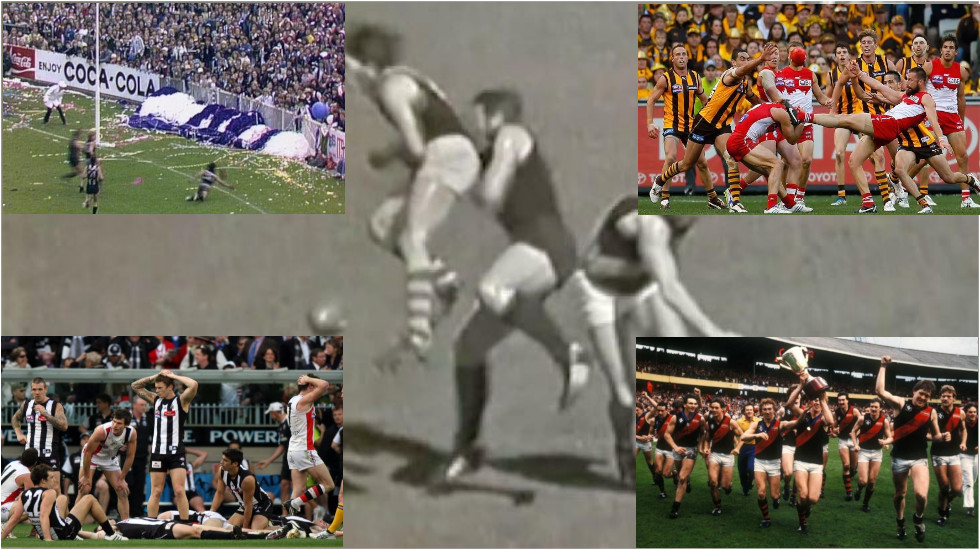
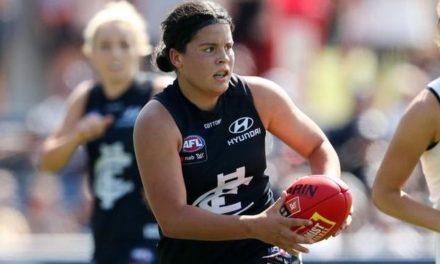
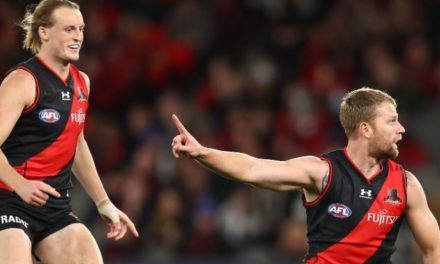
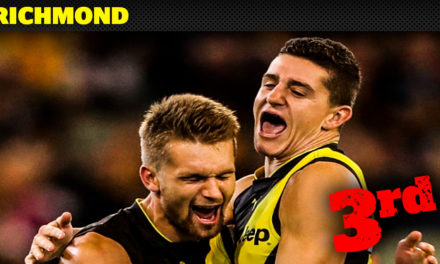







Great stuff Rohan – whilst I would like an article about grand finals to just once not include the words “Dom Sheed” this piece really makes me nostalgic in a good way.
Great Article Rohan! I shed a tear over the 84 GF and my dear departed Mum’s footy record was blemished by Merv’s goal too.
What a fun read!